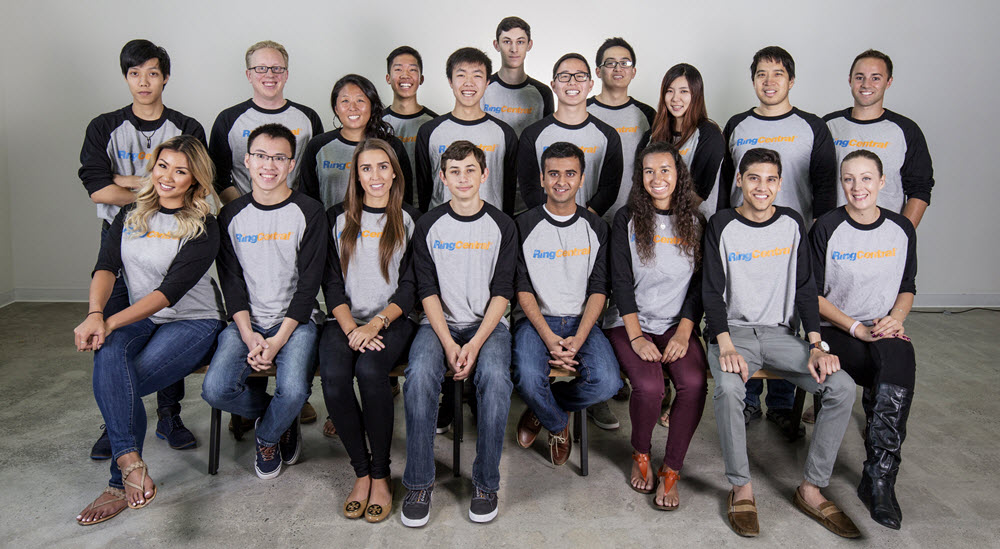Highlights:
- The Americans With Disabilities Act allows for increased economic participation, and protects against discrimination in the workplace.
- The theme of NDEAM 2021 is “America’s Recovery: Powered by Inclusion.”
Americans with disabilities — particularly women and people of color — have faced long-standing gaps in employment, advancement, and income. The COVID-19 pandemic has compounded these inequities, as people with disabilities have faced heightened risks. We met with disabled RingCentral employees to take a look at the challenges they face, and got some valuable input for the future.
Our participants included:
Tasia Bromell – Associate Program Coordinator, Diversity, Equity & Inclusion, Charlotte, NC
Joel Dodson – Engineering Manager, Telecommunications, Belmont, CA
RC: What kind of issues do disabled employees face in terms of inclusion?
Tasia Bromell (TB): “I call it the “Diversity-and-Stir” -mentality. Many companies believe that simply hiring disabled employees is enough. But they do this without providing the resources or organizational practices in place they actually need to help disabled individuals succeed. Beyond hiring, it is essential that organizations implement practices such as normalizing accommodations, disability-centric Employee Resource Groups (ERGs) and mentorships to generate awareness. Do this right and you get a virtuous cycle that not only attracts people with disabilities to your organization, but increases retention. When people truly feel included, it improves organizational performance.”
Joel Dodson (JD): “There are preconceptions regarding disability that can hinder inclusion. These stem from lack of exposure to people with various disabilities, which could be addressed by having more people with disabilities within the company. It’s kind of a chicken and egg I guess. Of course, there are also physical barriers. For example, if a person in a wheelchair can’t get to a meeting room, they might not be able to perform their job.”
RC: What about you, personally?
JD: “As a blind person, I use a screen reader on my laptop and mobile phone. If software tools (including websites) are not built to be accessible, I might not be able to do my job. It’s not because I don’t know how to do my job, it’s because the tools are insufficient. You can’t give me the top half of a broken shovel and expect me to dig a hole.”
TB: “Throughout my career, I have struggled with the discrepancy between organizations saying they want to include people with disabilities, and actually doing something about it. In my life and in my field, it can be frustrating to encounter talk without action.”
RC: What do you think RingCentral done/not done to foster inclusion among disabled employees?
TB: “I do think RingCentral’s culture fosters inclusion among disabled employees. RingCentral has never made me feel ostracized because of my disability, but actually more welcomed. RingCentral has brought me to the table around topics of disability inclusion which is my passion. Furthermore, I believe we’ve made improvements to our technology to foster inclusion among disabled employees, with product features like closed captions and transcripts.”
JD: “The culture may be welcoming, but there is still a long way to go. The closed captioning feature, for example, was presented as a way for people who joined meetings late to know what had been discussed. A document was included with the announcement giving some info on how to configure captioning for your meeting. I responded to the announcement saying “This is great, our deaf employees/customers will really appreciate this, but then I noticed the instructional document was mostly screen captures with little to no textual description. That’s tough for a blind person to work with..”
RC: Has the work-from-home trend affected disabled employees?
JD: “I suspect for the mobility-challenged, remote work has been overall very positive. I hesitate to speak for other disabilities. I know I appreciate not having to spend a small fortune on Uber/Lyft to commute. Overall though, it really depends on the individual and their disability. Deaf people might find it more difficult to be in group meetings remotely (unless there’s captioning). I read an article describing a blind person who prefers in-person meetings because he can use his laptop with a braille display while in the meeting. When he had to work from home, he had to have one computer to be in the meeting, and a separate one, with his braille display, to read documents being discussed in the meeting.”
TB: “Work-from-home has definitely positively affected employees with disabilities. As you’d expect, WFH simply makes it easier for disabled employees to do the day-to-day tasks their disabilities themselves might require. But what I’ve been thinking about is, WFH allows people with disabilities are able to work without feeling like the stigma of disability is at the front of the employer’s mind—mainly because they don’t have to disclose their disability. People with “invisible” disabilities (disabilities that can not be seen) often don’t disclose anyway for exactly this reason – they feel like they’d be categorized as someone who wouldn’t perform as well as a non disabled individual. With WFH, people with physical disabilities (like me) don’t have to disclose either. On a practical level, that’s…nice? On a broader level, I would love to see disabled people feel comfortable being up-front, and being treated equally, but that’s a cultural issue every organization has to address. The way the world is now, disabled employees typically feel like they need to hide their disabilities to succeed and I have to say, working from home makes it easier.”
Has the current labor shortage opened up more opportunities for disabled employees?
TB: “I would imagine so. Employers are finding themselves forced to cast a wider net and open their recruitment process to more than just a certain type of individual.
JD: “That’s so hard to know. Labor shortages are most likely temporary and if they are beneficial to the disabled, I’m not sure it’s sustainable. Normalizing disability is probably the only way to truly address employment issues. And probably the best way to normalize disability is to have more disabled people in the workplace. As more people realize how capable disabled people are, more disabled people might be hired. It’s a chicken-and-the-egg issue.”
RC: What sorts of efforts should employers make to help disabled employees work from home?
TB: “Employers should ensure technology is suitable for ALL people with disabilities. It really requires thinking things through in a new way, and having disabled employees be a part of that discussion. Furthermore, companies need to make sure that “out of office” doesn’t equate to out of mind. Consider people with disabilities in your organization’s strategic goals.”
JD: “Working from home has its benefits and drawbacks for everyone, and you’ll always find different issues for different people of differing abilities. How I benefit or suffer from working remotely might be completely different from another blind person. I don’t read braille so those issues don’t apply to me, but other issues might. For me personally, if I can work from the office, I can work from home. That might not be true for others. Whatever the issue, it all comes down to accessibility, and I agree with Tasia, that has to be thought through on a strategic level.”
RC: What could RingCentral, specifically, do better?
JD: “As a corporation, there is definitely work to do. The intentions are good, but the actions have to reflect them. But I do want to say, on a personal level, the company is very welcoming and I have not encountered anyone who has made me feel as if I am not capable.”
TB: “Working specifically in HR and DEI I do see the efforts. But like at any organization there are always improvements to be made. We can always better generate conversations around disability inclusion specifically which I haven’t seen as much. I would love an ERG group for disabled employees. I would love better awareness around accommodations and how to request them.”
It is our shared responsibility to tear down the barriers that remain for people with disabilities and to ensure that everyone has the chance to contribute. We know we have work to do as a company – culturally, technically and organizationally. We also know we’re a company that’s perfectly positioned – culturally, technically and organizationally – to do that work, and do it well. #HellotoInclusion
Want to get involved with organizations that promote disability issues in the workforce? RingCentral currently works with Easter Seals, EnableAmerica, RespectAbility, and WeExceed, among others.
Originally published Oct 29, 2021, updated Dec 30, 2022





